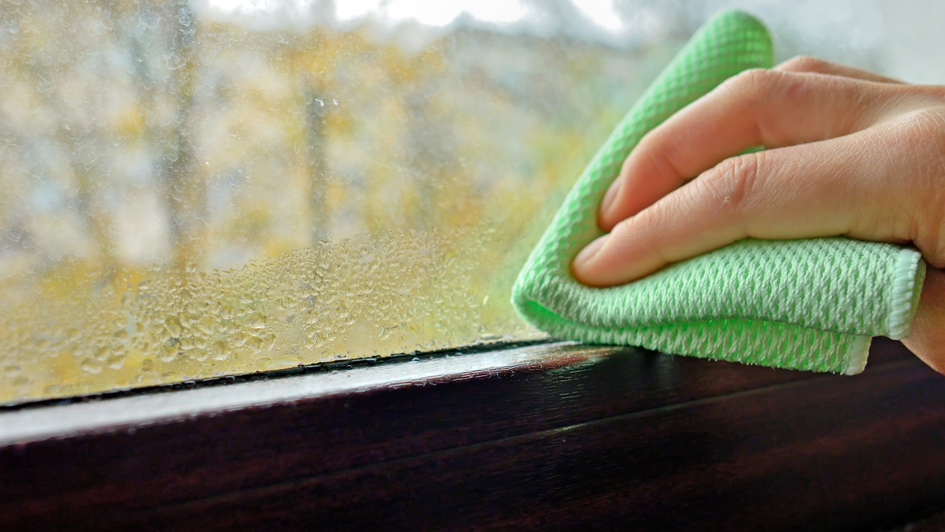
The windows in your home open up to the outdoors, a way to allow light in when you take in the view of your garden, yard or scenery. The last thing you need to see is a sweaty window coated in a film of condensation.
Not only are windows covered in condensation unappealing, they also can be a sign of a more substantial air-quality issue inside your home. Fortunately, there’s multiple things you can attempt to correct the problem.
What Produces Sweating on Windows
Condensation on the interior of windows is produced by the damp warm air inside your home hitting the cold surface of your windows. It’s particularly common around the winter when it’s much chillier outside than it is within your home.
Inside Moisture vs. In Between Panes
When dealing with condensation, it’s crucial to recognize the contrast between moisture on the inside of your windows versus moisture in between the windowpanes. One is an air-quality issue and the other is a window issue.
- Moisture within a window is created from the warm damp air inside your home collecting along the glass.
- Any moisture you notice between windowpanes is formed when the window seal breaks down and moisture gets in between the two panes of glass, and by then the window should be repaired or replaced.
- Condensation on the inside of the windows isn’t a window situation and can instead be resolved by fine-tuning the humidity across your home. Many things produce humidity inside a home, like showers, cooking, taking a bath or even breathing.
Why Sweating Windows Can Be an Issue
Even though you might think condensation inside your windows is a cosmetic issue, it could also be a sign your home has higher humidity. If this is in fact the case, water could also be condensing on window frames, cold walls or other surfaces. Even a small film of water can encourage wood surfaces to mildew or rot over time, promoting the growth of mildew or mold.
How to Reduce Humidity in Your Home
Not to worry, because there are various options for eliminating moisture from the air throughout your home.
If you have a humidifier operating within your home – whether it be a smaller unit or a whole-house humidifier – lower it further so the humidity inside your home comes down.
If you don’t have a humidifier running and your home’s humidity level is higher than you prefer, consider purchasing a dehumidifier. While humidifiers adds moisture inside your home so the air doesn’t dry out, a dehumidifier pulls excess moisture out of the air.
Small, portable dehumidifiers can remove the water from a single room. However, portable units require emptying water trays and usually service a small area. A whole-house dehumidifier will eliminate moisture throughout your entire home.
Whole-house dehumidifier systems are managed by a humidistat, which permits you to establish a humidity level just like you would select a temperature on your thermostat. The unit will run automatically when the humidity level surpasses the set level. These systems work with your home’s HVAC system, so you will want to contact qualified professionals for whole-house dehumidifier installation Genoa.
Other Ways to Lower Condensation on Windows
- Exhaust fans. Putting in exhaust fans around humidity hotspots such as the bathroom, laundry room or above the oven can help by pulling the warm, moist air from these areas out of your home before it can raise the humidity level across your home.
- Ceiling fans. Running ceiling fans can also keep air flowing throughout the home so humid air doesn’t get trapped in one area.
- Opening up window treatments. Pulling open the blinds or drapes can lower condensation by preventing the damp air from being stuck against the windowpane.
By decreasing humidity inside your home and dispersing air throughout your home, you can make the most of clear, moisture-free windows even in the middle of the winter.

